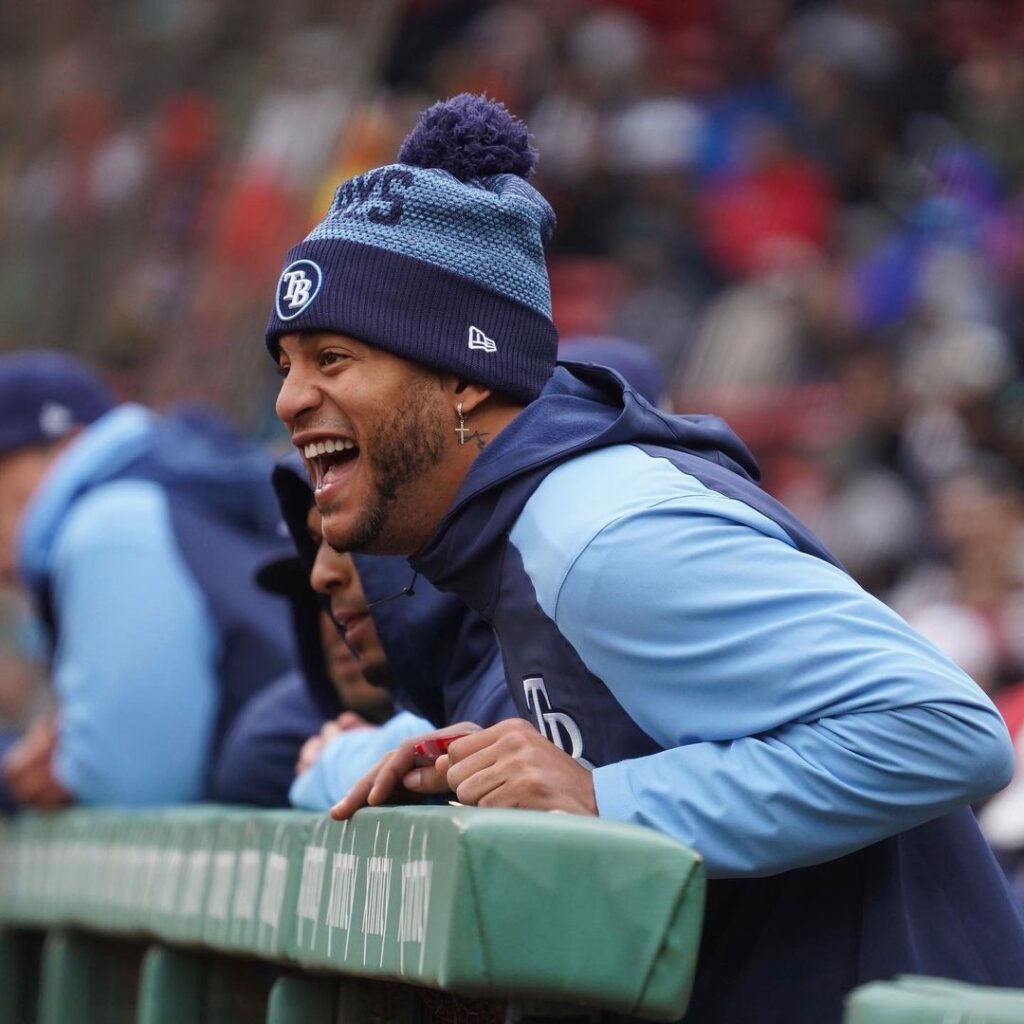
After winning three of four in Boston, the Tampa Bay Rays return to the friendly confines of the Trop, where they’ll start a three-game set against the AL Central-leading Twins, on Tuesday. The Twins most recently split a four-game series with the Guardians.
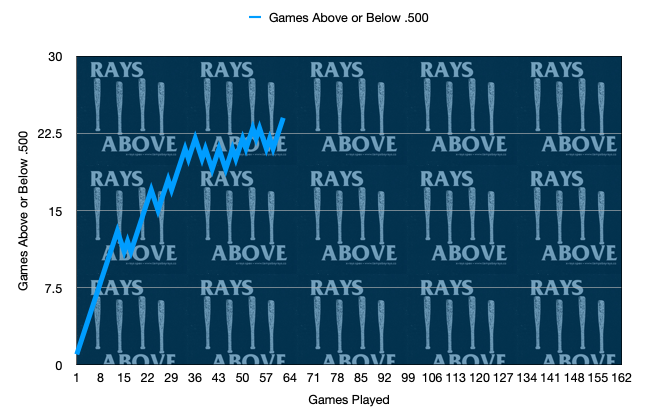
At 43-19 on the season, the Rays enter play a season-high 24 games above .500, and 4.5 games ahead of the second-place Orioles in the AL East. The Twins enter play 31-29 on the season.
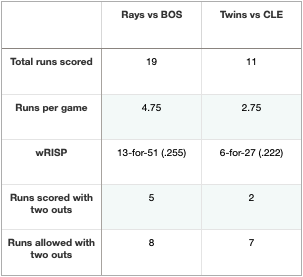
It was a 4-3 road trip that started inauspiciously for the Rays after they dropped the first two games of a three-game set at Wrigley Field, and the first game of Saturday’s day/night doubleheader. Yet, Tampa Bay won four of its last five contests and gained a game on Baltimore. All this despite the Injured List additions of Josh Fleming and Brandon Lowe and, not to mention, the rather inopportune weather. I’d call that a successful trek through MLB’s most historic ballparks.
What led to the Rays’ success in Boston’s highly vaunted sardine can of a stadium? The Red Sox scored the fourth most runs in baseball coming into the most recent series against Tampa Bay, averaging 5.23 per game. However, the Rays limited them to just 13 runs in four games (3.25 runs a game), including just five combined runs in the final three games of the set. In other words, the pitching staff — especially the stable — came up big, forcing 36 consecutive outs while not surrendering an earned run.
Tampa Bay’s ability to get ahead of batters early in counts (a 61.4% first-pitch strike rate) will help them to approach the barrel rate embued Twins effectively. In short, Minnesota looks to get on base and then hit the ball hard in order to plate runs. Tampa Bay can diffuse that by throwing strikes and playing good defense up the middle.
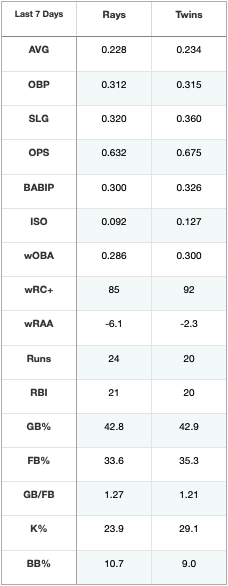
While slashing a modest .228 BA/.312 OBP/.320 SLG/.632 SLG/.632 OPS over the last seven days, and hitting just two home runs over that stretch, the core of Yandy Díaz, Wander Franco, Randy Arozarena, etc. produced when they needed to — particularly in Boston. Tampa Bay also received from Josh Lowe, Francisco Mejía, and Manuel Margot. They will need to continue to do that if the Rays are going to be successful over the next three days.
The Rays went 2-4 against the Twins last season, including 1-2 at the Trop.
Pitching Probables
Over the next three days, Kevin Cash will turn to Zach Eflin (7-1, 3.30 ERA, 3.57 FIP), a pitcher to be named before Wednesday’s contest, and Tyler Glasnow (0-0, 3.72 ERA, 2.97 FIP). Rocco Baldelli will counter with Louie Varland (3-1, 3.51 ERA, 4.89 FIP), Pablo Lopez (3-3, 4.54 ERA, 3.79 FIP), and Bailey Ober (3-2, 2.33 ERA, 3.18 FIP).
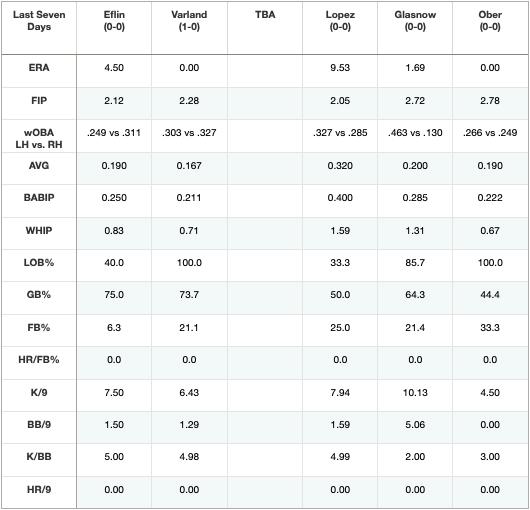
Zach Eflin allowed three runs on four hits and a walk over six innings against the Cubs on Wednesday. He struck out five. Eflin settled down after allowing two first-inning runs, blanking the Cubs over his subsequent five frames before surrendering a leadoff double to Seiya Suzuki in the seventh. That run came around to score with Collin Poche on the mound. It’s the third consecutive quality start for Eflin, who’s pitched at least six innings in his last six outings. He’s now 7-1 with a 3.30 ERA and a 3.57 FIP, with a 1.10 WHIP, and a 7.13 K/BB through 10 starts (60 innings) this season. Eflin is 1-0 with a 1.29 ERA in one career start against the Twins.
Louie Varland tossed seven scoreless innings and allowed four hits and one walk while striking out five batters against Houston. Varland suffered his first loss of the season against Toronto in his previous turn, but he got back in the win column on Wednesday. The right-hander tossed a season-high seven innings and held the Astros scoreless, notching his fifth quality start through seven turns. None of the four hits Varland allowed went for extra bases, and he continued to demonstrate good control — he’s surrendered one or fewer free passes in each of his past four starts. Overall, Varland maintains a 3.51 ERA and a 4.89 FIP on the season, with a 1.15 WHIP, and a 4.88 K/BB across 41.0 innings. He relies primarily on a 95 mph fourseam fastball and an 87 mph slider that has short glove-side cut, while also mixing in an 85 mph changeup that has some natural sink to it.
TBA
Pablo Lopez allowed six runs on eight hits and one walk while striking out five batters over 5.2 innings against Cleveland on Thursday. Lopez looked great early, giving up just one run over his first five frames, but he fell apart in the sixth. In that inning, Lopez allowed six hits — all singles — and a walk, surrendering five runs while getting only two outs. He’s yielded four or more runs in three of his past four starts. Lopez has a 6.95 ERA and 1.36 WHIP over that stretch, although he’s continuing to post decent strikeout numbers, notching 24 punchouts across 22 innings over the four-game stretch. Lopez relies primarily on a 95 mph fourseam fastball, an 84 mph slider, and an 89 mph change, while also mixing in an 82 mph curveball, and a 95 mph sinker. He is 1-3 with a 3.72 ERA in five career starts against Tampa Bay. Key Matchups: Randy Arozarena (2-5, 2B), Francisco Mejía (1-1, BB), Harold Ramírez (2-3, 2B, HR, RBI), Taylor Walls (1-3)
Tyler Glasnow allowed one run on four hits and three walks over 5.1 innings. He struck out six. Making his second start of the season after suffering a grade two oblique strain in Spring Training, Glasnow looked sharp as he tossed 88 pitches (54 strikes, 61% strike rate, 12 whiffs, 14% SwStr%). The right-hander had a good pitch mix and got five of his six strikeouts on offspeed pitches. It was an encouraging performance as he continues to ramp things up. Glasnow now maintains a 3.72 ERA and a 2.98 FIP through 9.2 innings, with a 3.5 K/BB, and a 1.34 WHIP.
Bailey Ober surrendered four hits over six scoreless innings on Friday against Cleveland. He struck out three. Ober allowed just one Guardian to reach scoring position, and he lowered his ERA and FIP to 2.33 and 3.18 (respectively) with his first scoreless appearance since May 5. The right-hander registered a 4.09 ERA over his previous four starts but he walked just five batters during that span. Ober relies primarily on a whiffy 92 mph fourseam fastball and an 82 mph slider that has short glove-side cut and some two-plane movement, while also mixing in an 84 mph changeup that has obvious arm-side fade and natural sinking action, and a 78 mph curveball that has sharp downward bite.
The Music That Influenced This Preview
Anti-fascist hardcore/oi! from London that, per their BandCamp page, “pulls no punches as it shows up government failures to support our key workers, calls out police corruption, blows the lid off hardcore elitism, and highlights the negative effect toxic social media has on our youth.” Catchy and hard as nails.

